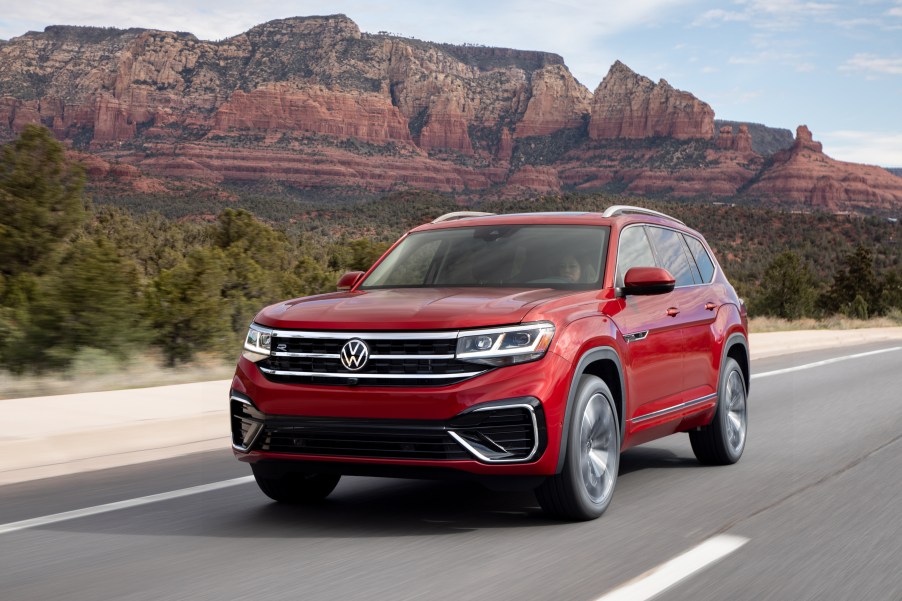
2020 Volkswagen Atlas vs 2020 Hyundai Palisade: Which One Works Best for You?
For those in the market for a large three-row SUV, there is plenty to choose from. In fact, there are currently 25 different three-row SUVs on the market today, so choosing the right one for your family can be more daunting than choosing the right wine to go with your dinner. Even more daunting would be cross-comparing all of those SUVs, so here is a comparison of two newcomers to the segment: The Volkswagen Atlas and the Hyundai Palisade.
Why compare these two?
In a world where the Ford Expedition and Toyota Highlander have long become household names, it’s easy for any prospective buyer to overlook the recent offerings from Hyundai and Volkswagen. Why? Because Hyundai has only started to make a much larger splash in the car pool with the introduction of the Palisade and Volkswagen is still brushing off the last bit of dirt from the “dieselgate” emissions scandal. So it only seems fitting to shed some light on the two SUVs that are out to change consumers’ perspective on each brand.

What’s the difference between the two?
For an easy comparison, we’ll highlight three factors that give the most bang for your buck when deciding between these two vehicles: Interior volume, safety, and performance. If you’re looking for a three-row SUV, you most likely need enough room for people and cargo. After you stuff those people and cargo into the car, their safety is important. And lastly, having the performance to get to your destination in a timely and fuel-efficient manner could save you money in the future as well as at the gas pump.

How do the two vehicles stack up?
The interior of Volkswagen Atlas boasts about an inch more of headroom, hip room and legroom in all three rows, but what’s more impressive is its cargo volume. Behind the front seats, the Atlas has 96.8 cubic feet of space, 55.5 cubic feet behind the second row, and 20.6 cubic feet behind the third row. By comparison, the Palisade has 86.4., 45.2 cubic ft., and 18.0 respectively. Both SUVs have an easy-access third-row via a push of a button (Palisade) or a pull of a handle (Atlas), but if space for heads, arms, and feet is of the utmost importance, then score one for the Atlas.
As for safety, both the Atlas and Palisade have the same type of safety features, but there are some differences. The Palisade has seven airbags, while the Atlas has six and both vehicles have a standard forward-collision warning with an automatic braking system that helps to mitigate any frontal crashes. Both SUVs have driver assistance safety features such as adaptive cruise control, lane keep assist, and parking sensors. But the Hyundai Palisade offers a little more by way of a “Driver Attention Warning” feature and a “Rear Occupant Alert,” which reminds you to check the rear seats before leaving the car. It’s all in the details, which the Palisade has over the Atlas when it comes to safety.

Performance is straight-forward as the Hyundai Palisade houses a 3.8-liter V6 that puts out 291 horsepower and 262 pound-feet of torque compared to the Volkswagen Atlas’ 3.6-liter V6 that boasts 276 and 266, respectively. Fuel economy numbers between the two are similar; the Palisade gets 19 city/26 highway and the Atlas is rated at 20 city/24 highway. It’s a close call, but the Palisade has better figures for longer road trips.

Which one is a better buy?
As with any form of car shopping, there’s never a clear-cut answer because there are other factors to consider aside from those highlighted here. But considering both models are priced similarly, the Atlas would work better if you’re looking for more space, while the Palisade would be better if safety and performance are more important. If we had to pick based on the three factors outlined, the Hyundai Palisade is a better value.



